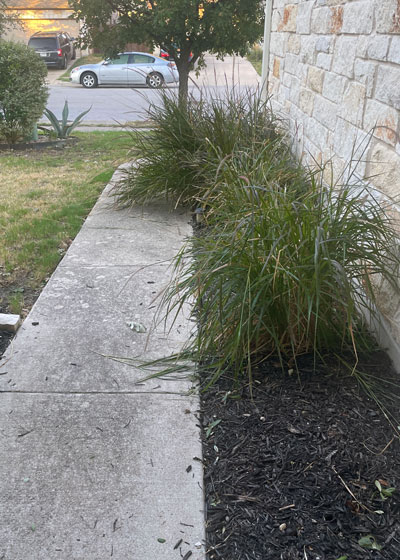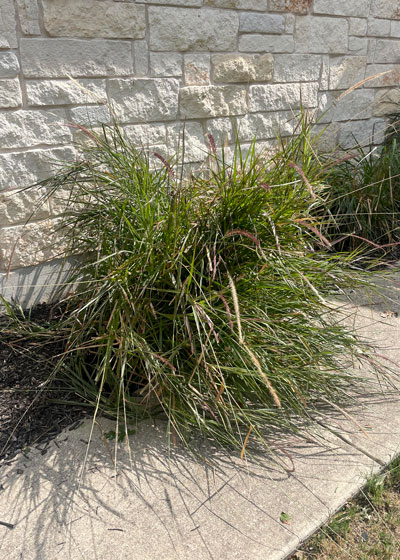Q&A – Ask Neil: October 5, 2023
(Please read these instructions carefully.)
Before you post your question, please look at recent issues to see if someone else has already asked it. You might find your answer there.
How to submit your question…
(Note: You may need to allow a pop-up window to come up in order to get the link for sending your photo(s). If you have already submitted your question and didn’t see the pop-up window, please click here.)
• Click the link provided below to post your question. After you submit your question, a new window will pop up giving you the address to which you can e-mail a SHARP, HIGH-RESOLUTION PHOTO to accompany your question. Please DO NOT SEND THUMBNAIL PHOTOS in case I need to zoom in to see things.
• Click here to post your question.
• Please ONLY POST YOUR QUESTION ONE TIME. We can only accept a set number of questions each week, and when we get duplicates it costs other people their chances.
• One question per reader, please.
• Please use this only for posting questions – not for standard emails.
• Watch for your answer in the following week’s e-gardens.
• I choose those of greatest general interest. For example, plant IDs seldom make the cut.
• I must have your first name or initials.
• I must have your city or county. (Texas is a very large state.)
QUESTION 1
HOW CAN I KEEP CRAPE MYRTLES FROM FREEZING BACK TO THE GROUND?
Question: In spring 2022 I planted six Purple Magic crape myrtles. Last winter they froze back to the ground. How can I keep that from happening again this year? Adrienne B., Frisco.
Answer: Purple Magic was introduced into the nursery trade 12 or 13 years ago. I have not personally grown it side-by-side in comparison to similar cultivars such as my own longtime favorite crape myrtle Catawba. However, in the patent application its originator Dr. Michael Dirr compared it in many ways to Catawba, saying it was more compact and darker in color. Both of those would be very nice I would think. Here is the link to that patent application.
Mike Dirr and I worked together on our Masters degrees at Ohio State for two years. He is nothing short of a brilliant horticulturist, so I would trust his research and breeding work completely. However, this crape myrtle is listed elsewhere as hardy to Zone 7. Our Christmas freeze (in Collin County where I, like you, garden) last year was so very cold and very early that many varieties of crape myrtles suffered the same fate that yours did. Your best hope would be for a more normal winter. There just isn’t much you can do other than to keep the plants well watered the balance of this fall and through the winter. They will come through most winters without an issue.
QUESTION 2
WHY ARE HOLLIES TURNING BROWN?
Question: Why are my holly bushes turning brown and continuing to turn? Is it something on my landscaper’s trimmers? Two of the younger ones died last year. Now it seems to be spreading, but I’ve noticed it on other hollies in the neighborhood, also on Southlake Blvd. Makayla M., Keller.
Answer: I am a self-proclaimed holly fanatic. They’re our most dependable landscaping shrub for almost all of Texas. I have had, for 46 years, perhaps 200 holly plants of 30 or more varieties in my Metroplex-area landscape. I will guarantee you that your landscaper did not bring any insect or disease to your plants. These plants have gotten too dry. The issue with hollies is that they don’t wilt visibly, so it’s very easy for them to pass the point of no return without a homeowner realizing it. That’s true with old, established plants like yours, but it’s especially true with new plantings fresh out of nursery containers. That’s why I keep advising people to water new plantings by hand every couple of days. In this case, a soaker hose allowed to run for several hours every couple of weeks would have saved your plants. I’m really sorry to deliver that bad news, but it’s always been my policy to be honest with my listeners and readers.
QUESTION 3
HOW CAN I ELIMINATE APHIDS FROM HIBISCUS AND ROSE-OF-SHARON PLANTS?
Question: How can I get rid of aphids on my hibiscus and rose-of-Sharon plants? I’ve tried Neem oil, insecticidal soap, and I’ve tried blasting them off with a hard stream of water. Nothing has worked so far. No other plants have them. Patti N., Houston.
Answer: First off, hibiscus and roses-of-Sharon are very closely related, so it stands to reason that both of these members of the cotton family would be attractive to the same insect pest. Aphids are prolific, partly because the female aphids give rise to living young without males being present. Numbers can increase very rapidly. You have done the things that I know to suggest, so I plunged into university websites. This page from the University of Wisconsin had perhaps the best overall explanation of the life cycles and control of aphids. I think you’ll find it useful.
QUESTION 4
WHAT IS WRONG WITH MY LANTANAS’ FLOWER HEADS?
Question: Volunteer lantanas in my yard (mostly the orange variety) eventually develop buds and blooms that are deformed, resembling broccoli. Nursery-bought plants, by comparison, flower normally. What’s going on? Alison T., Austin.

Answer: I spent 30 minutes online trying to find an answer for you, then another 30 minutes talking old times with one of the best growers of lantanas I’ve ever known. My conclusion based on all that is that you are probably looking at damage from thrips. They’re sliver-shaped insects that cause deformed leaves and flowers in many different species of plants. My grower friend suggested you use insecticidal soap and Spinosad, and that you try to get ahead of the game next summer and stay there. Don’t wait until you see the damage starting to show up. I’ve not seen this myself. The only insect pest I’ve ever seen bother lantanas is lace bugs.
QUESTION 5
SHOULD I CUT OUR 10-YEAR-OLD DWARF YAUPONS BACK OR REPLACE THEM?
Question: Our 10-year-old dwarf yaupons took a beating this summer with watering restrictions and the scorching late afternoon sun. Should I cut these back now to where I see green, or should I wait until spring? Or should I replace them? Rachael S., Pflugerville.

Answer: Sadly, these are pretty much lost causes. I don’t believe the totally browned ones will come back at all, and there isn’t enough green tissue left on the others to matter. Even your elaeagnus was hurt. I’m so sorry. I would take them out, rework the beds, even including new designs if you wished, and start planning your new plantings. They could go in this fall or early next spring. Don’t wait too long, however. Nursery stock will probably be in short supply once again. Don’t replant, of course, until you have a guaranteed supply of irrigation water. Plan on watering the new plantings by hand every two days for the first couple of years.
QUESTION 6
HOW CAN I CUT OUR FEATHERGRASS BACK? IT WAS HURT BY THE RECENT HAIL STORM.
Question: How can I trim the feathergrass I planted this spring back to reshape it after the recent hailstorm? Whitney R., Austin.


Answer: I believe you may have fountaingrass. Mexican feathergrass is of a much finer texture. I’m going to post a photo of feathergrass so you can compare the two. Beneath that I’m going to post a photo of fountaingrass for comparison. I’m going to admit that I’m having trouble seeing flowerheads on your grass to help me ID it.

The only reason I bring that up is because Mexican feathergrass is a short-lived perennial in most of Texas. That means that it will come back each spring. Purple fountaingrass is not as winter-hardy, so for much of the state it is used as an annual that will need to be replanted each spring. I believe that’s what you have, although it normally has a darker color and plumes by this time of year. Your plants may be growing in more shade. That would affect their color and production of plumes.

